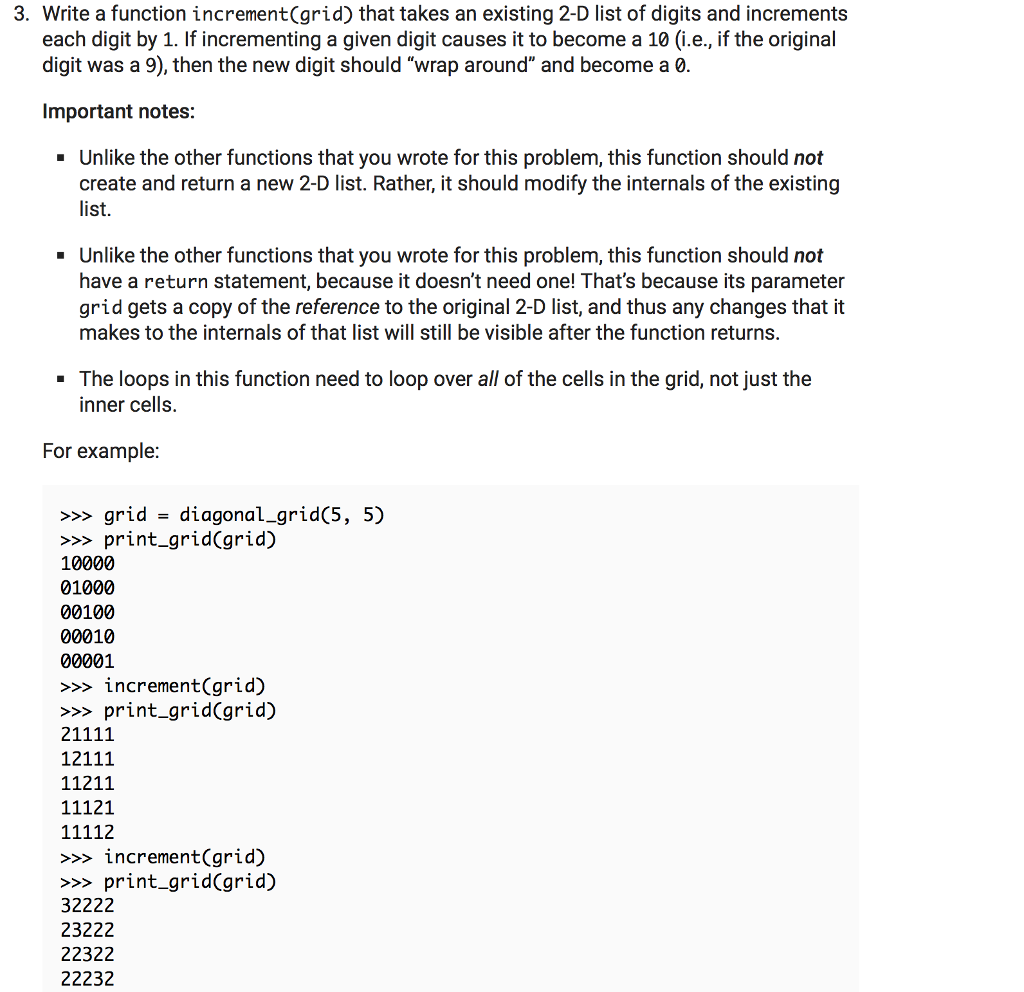Answered step by step
Verified Expert Solution
Question
1 Approved Answer
def diagonal_grid(height, width): creates and returns a height x width grid in which the cells on the diagonal are set to 1, and all
def diagonal_grid(height, width): """ creates and returns a height x width grid in which the cells on the diagonal are set to 1, and all other cells are 0. inputs: height and width are non-negative integers """ grid = create_grid(height, width) # initially all 0s
for r in range(height): for c in range(width): if r == c: grid[r][c] = 1 return grid

Step by Step Solution
There are 3 Steps involved in it
Step: 1

Get Instant Access to Expert-Tailored Solutions
See step-by-step solutions with expert insights and AI powered tools for academic success
Step: 2

Step: 3

Ace Your Homework with AI
Get the answers you need in no time with our AI-driven, step-by-step assistance
Get Started


